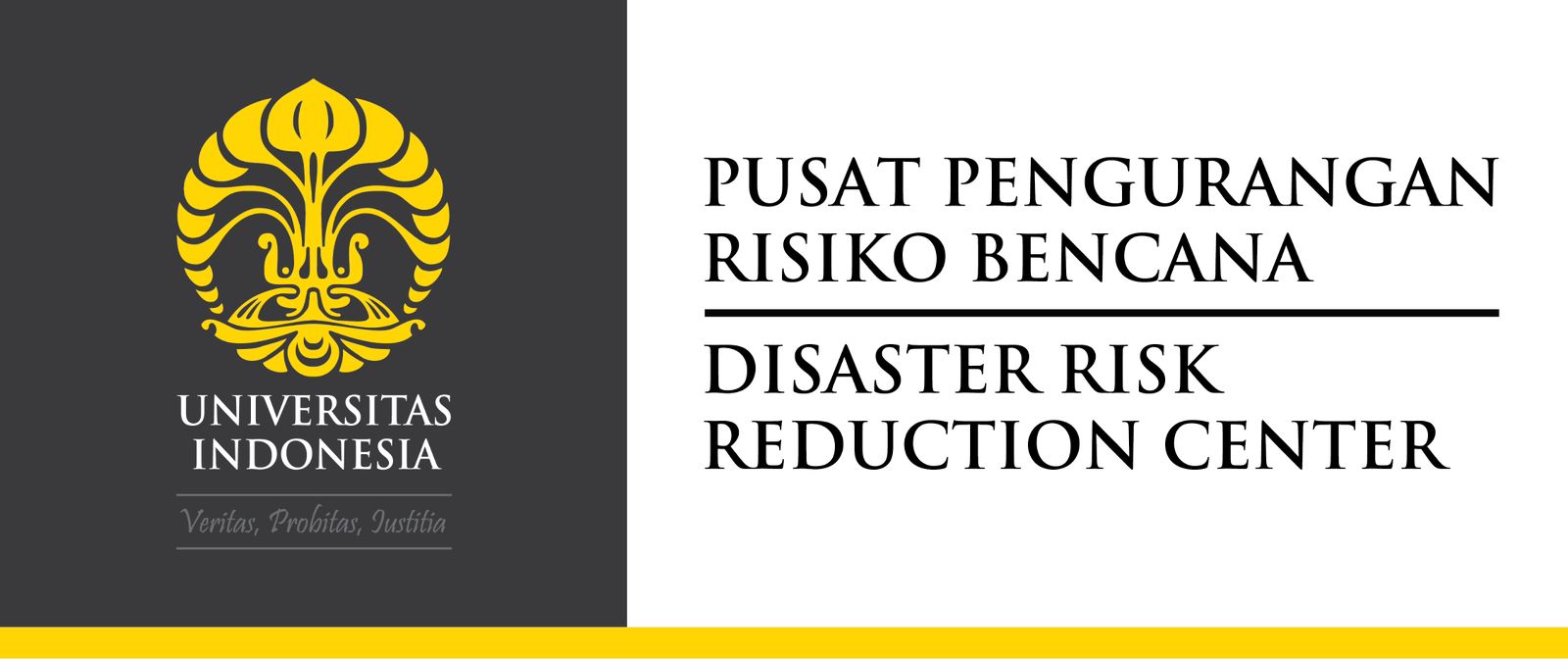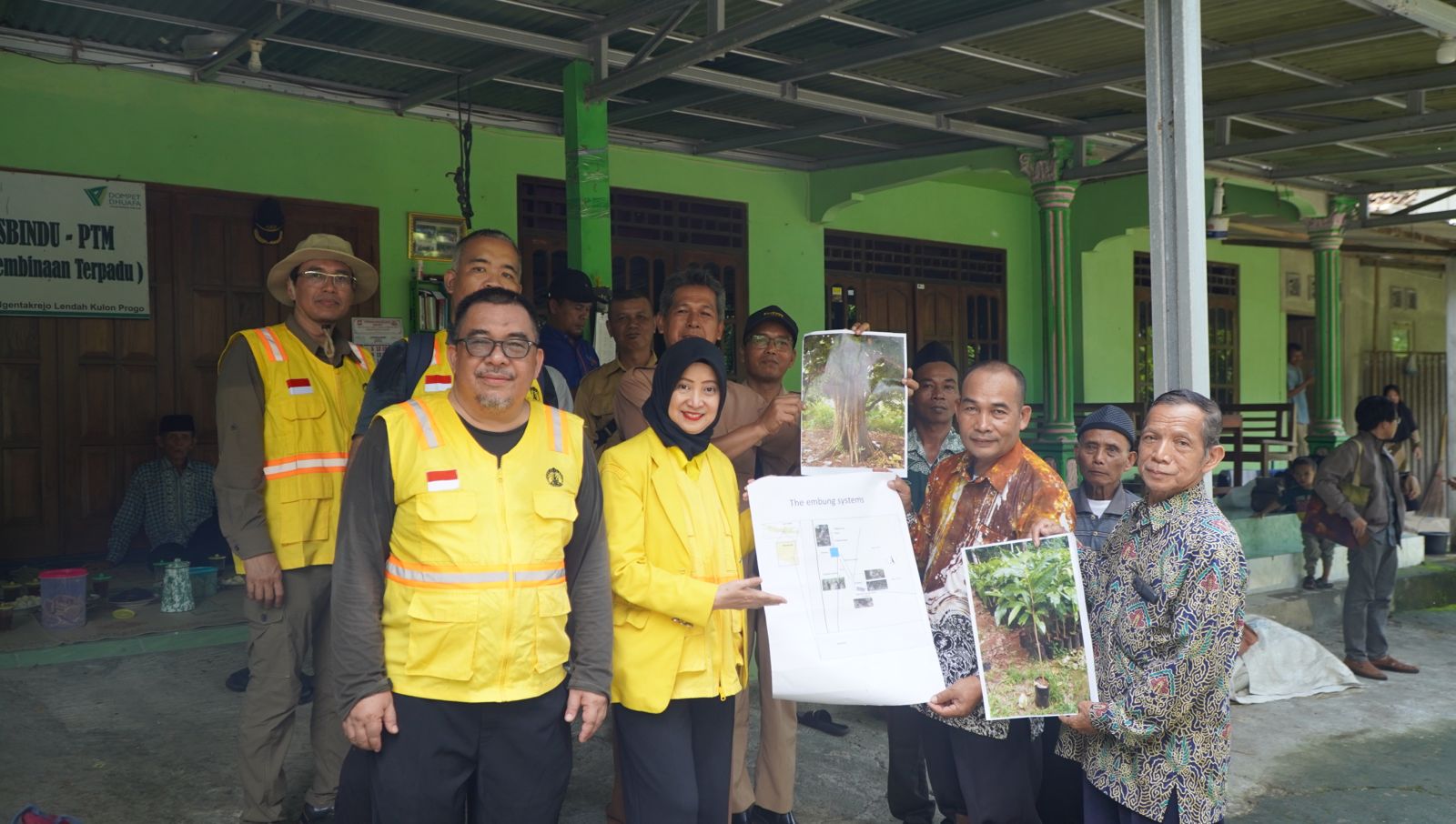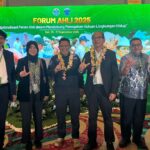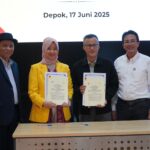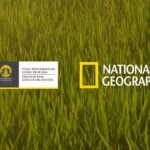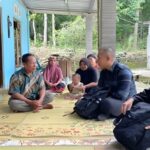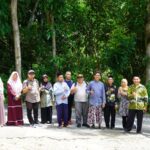Community Action for Sustainable Water Management: Empowering Dukuh Bendo Through Embung-IoT Integration. Dukuh Bendo, Desa Ngentakrejo, Kecamatan Lendah, Kabupaten Kulonprogo, DIY.
Kulonprogo, Yogyakarta, 14 April 2025 – As part of an effort to strengthen freshwater conservation in the arid region of Kulonprogo, the research team from the the Disaster Risk Reduction Center Universitas Indonesia (DRRC UI) in collaboration with Faculty of Public Health Universitas Indonesia (FKM UI) and National Research and Innovation Agency Republic of Indonesia (Badan Riset dan Inovasi Nasional ,BRIN, Republik Indonesia) conducted a field survey in Dukuh Bendo, Ngentakrejo Village. The initiative focuses on combining traditional water storage systems—embung—with modern Internet of Things (IoT) technologies, enhancing resilience and efficiency in water management amid the increasing impact of climate change. The research team is led by Prof. Dra. Fatma Lestari, Ph.D., who was recently named a National Geographic Explorer. This research was supported by the National Geographic Society through its World Freshwater Initiative.
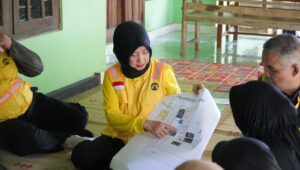
Dukuh Bendo, despite relatively high annual rainfall, experiences critical water scarcity during the dry season. This paradox is largely caused by land conversion in upstream areas and the growing effects of El Niño-induced droughts. In response, the local community has developed embung, small reservoirs that store rainwater and spring water, relying on indigenous knowledge systems for design and maintenance.
To modernize this traditional approach, the research team proposed integrating IoT for real-time water monitoring and optimized distribution. This technological approach supports not only better irrigation and household water use but also aims to empower local communities through active participation and digital training.
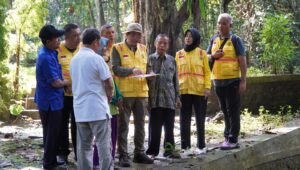 During the field visit, DRRC researchers engaged in in-depth discussions with community members, including Sub-Village Head Bendo, Mr. Parman and the irrigation manager, Mr. Ngadirin. The team introduced IoT-based systems to monitor soil moisture and embung water levels, triggering pumps only when necessary. This efficient irrigation model helps reduce water loss, adapting to crop growth cycles and preventing excessive water discharge.
During the field visit, DRRC researchers engaged in in-depth discussions with community members, including Sub-Village Head Bendo, Mr. Parman and the irrigation manager, Mr. Ngadirin. The team introduced IoT-based systems to monitor soil moisture and embung water levels, triggering pumps only when necessary. This efficient irrigation model helps reduce water loss, adapting to crop growth cycles and preventing excessive water discharge.
In support of water and land conservation, the research also incorporates native vegetation restoration. Gayam (Inocarpus fagifer) and Aren (Arenga pinnata) were introduced as ecologically and culturally significant species that contribute to soil stabilization, groundwater recharge, and biodiversity preservation. The team also conducted a detailed topographic and hydrological assessment of two embung locations:
- Embung 1, revitalized in 2010 through a community initiative, is located upstream at an elevation of 61 meters. It serves as the main water source for agriculture, livestock, and household needs.
- Embung 2, located downstream at 40 meters elevation, remains underdeveloped. Though initiated decades ago, its incomplete structure and sedimentation problems require urgent renovation.
Based on the survey findings, a new plan has been proposed to redesign Embung 2, utilizing low-cost and environmentally adaptive construction methods. The approach emphasizes the preservation of existing vegetation, particularly local bamboo groves, and harmonizes with the site’s natural topography
This initiative is a crucial step toward community-led, tech-integrated conservation that blends traditional ecological knowledge with cutting-edge innovation to secure water resources in vulnerable landscapes.
